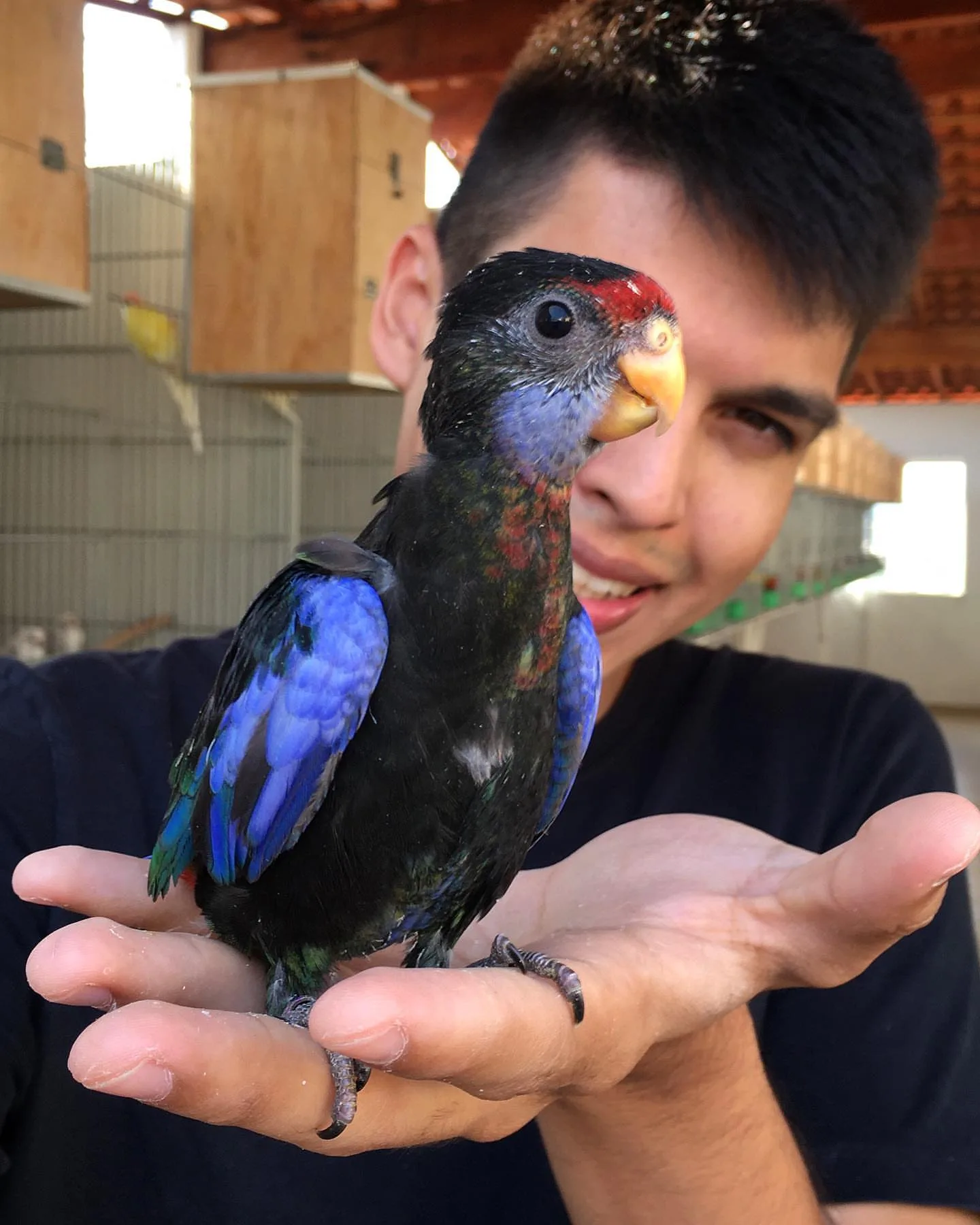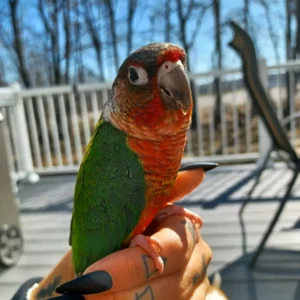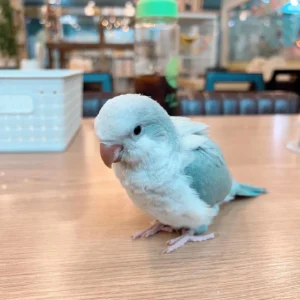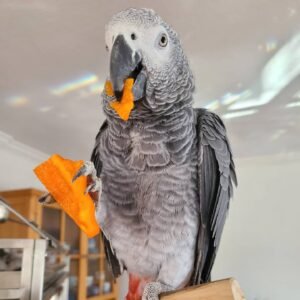
Parrot Harness Training: 10 Essential Steps
Discover the essential steps to master parrot harness training, from selecting the right harness to acing initial introductions. Dive into expert tips on building trust, ensuring comfort, and progressing gradually for successful training sessions. Unleash your bird’s potential with our comprehensive guide tailored to make harness training a breeze, advertisement and behavior.
Explore our selection of vibrant parrots for sale. Adopt a healthy parrot today!
-
Product on sale
 JASPER, Male Yellow Sided Green Cheek ConureOriginal price was: $900.00.$700.00Current price is: $700.00.
JASPER, Male Yellow Sided Green Cheek ConureOriginal price was: $900.00.$700.00Current price is: $700.00.
Key Takeaways
- Understand your parrot’s behavior to anticipate reactions during harness training.
- Choose the correct harness size to ensure comfort and prevent discomfort.
- Introduce the harness gradually to help your parrot acclimate to wearing it and adjust its behavior.
- Use positive reinforcement techniques like treats and praise to encourage harness acceptance.
- Practice short training sessions regularly to build familiarity and reduce stress.
- Ensure your parrot’s comfort and safety by checking the harness fit and adjusting as needed.
1. Understand Parrot Behavior
Understanding your pet bird is crucial for successful parrot harness training. By observing your parrot’s body language cues, you can gauge its comfort level during training sessions. Look out for signs of stress or fear, such as feather puffing or beak grinding, to adjust your training approach accordingly.
To effectively train your parrot to wear a harness, it’s essential to delve into the natural behaviors of these intelligent birds. Tailoring your training methods based on their instincts and preferences can lead to better results. For instance, incorporating positive reinforcement techniques like treats or toys can motivate your parrot and make the training experience more enjoyable.
2. Choose the Right Harness Size
When selecting a harness for your parrot, accurate measurement is crucial to ensure a proper fit that doesn’t cause discomfort or restrict movement. Consider the material and design of the harness as well, opting for one that balances durability with your parrot’s comfort.
- Measure your parrot’s chest girth and length to determine the appropriate size.
- Look for adjustable straps that allow for a customized fit.
- Opt for harnesses made from soft, lightweight materials to prevent skin irritation.
- Ensure the harness is snug but not too tight, allowing room for movement.
3. Introduce Harness Gradually
Familiarize your parrot with the harness by placing it nearby.
Allow your parrot to investigate the harness at its own pace.
Progressively desensitize your parrot to wearing the harness through positive interactions.
4. Use Positive Reinforcement
Harness training for your parrot can be a rewarding experience when positive reinforcement is employed. By rewarding your parrot with treats or praise each time it displays acceptance towards the harness, you create a positive association with the training process. Implementing a clicker training method further reinforces positive behaviors during harness training, allowing your parrot to understand what actions lead to rewards. Encouraging your parrot with verbal cues and gentle encouragement throughout the training process helps in building trust and confidence.
- Reward acceptance towards the harness with treats or praise.
- Clicker training method reinforces positive behaviors effectively.
- Verbal cues and gentle encouragement aid in building trust and confidence.
5. Practice Short Training Sessions
Engage your parrot in short training sessions to optimize learning. Keep sessions concise, around 5-10 minutes, ensuring they remain focused and receptive. Prioritize quality teaching over lengthy durations to prevent boredom or frustration. By breaking down the training process into manageable steps, you maintain your parrot’s interest and motivation levels high throughout the session. This approach aids in reinforcing positive behaviors effectively, enhancing the overall training experience for both you and your feathered companion.
6. Ensure Comfort and Safety
Regularly check the harness for any signs of wear and tear to ensure safety.
Adjust the harness snugly but comfortably to prevent any discomfort for your parrot.
Create a safe and distraction-free environment for harness training to minimize stress for your parrot.
- Safety First: Prioritize your parrot’s safety by inspecting the harness regularly.
- Comfort is Key: Ensure the harness fits well without causing any discomfort.
- Stress-Free Environment: Set up a calm space for training sessions to reduce stress levels.
Remember, a comfortable and secure harness is essential for successful training sessions with your parrot. Ensuring both safety and comfort will lead to a positive experience for you and your feathered friend.
7. Monitor Body Language Cues
Observing your parrot’s body language is crucial during harness training. By paying attention to how your parrot reacts, you can tailor the training to suit its comfort level. Look for signs of distress or anxiety, such as feathers puffing up, beak grinding, or vocalizations indicating unease. If your parrot appears uncomfortable, consider taking a step back in the training process or adjusting your approach. On the other hand, positive body language cues like relaxed posture, steady movements, and vocalizations of contentment indicate a receptive attitude towards training. Adapting your methods based on these cues can help build trust and confidence between you and your feathered friend. Remember, each parrot is unique, so being attuned to their individual body language responses is key to successful harness training.
8. Build Trust and Bonding
Harness training is not just about teaching your parrot to wear a harness; it’s a chance to strengthen the bond between you and your feathered friend. By engaging in positive interactions during training, you create a foundation of trust that goes beyond the training process. Respecting your parrot’s boundaries and comfort levels throughout the training sessions is crucial in building a solid relationship based on mutual understanding.
Harness training can serve as an excellent opportunity to enhance the connection with your parrot through shared experiences. It allows you to spend quality time together, fostering trust and communication. By approaching harness training as a bonding activity rather than just a task, you can create lasting memories and deepen the emotional bond with your pet bird.
9. Be Patient and Consistent
Harness training for parrots requires time and dedication. Each bird learns at its own pace, so it’s crucial to be patient throughout the process. Consistency plays a vital role in successful harness training; sticking to a regular schedule helps reinforce learning.
To ensure effective training, provide your parrot with multiple opportunities to get accustomed to the harness. By gradually introducing and familiarizing them with the equipment, you can help reduce any anxiety or resistance they may have.
Repetition is key in reinforcing positive behaviors. Offering rewards and praise during each training session can encourage your parrot to associate the harness with positive experiences, making them more receptive to wearing it.
Remember, building trust and a positive relationship with your parrot is fundamental in successful harness training. By understanding and respecting their individual times of learning, you can create a harmonious training environment that leads to long-term success.
10. Seek Professional Guidance if Needed
Harness training your parrot can be a rewarding experience, but it may come with challenges. Seeking professional guidance is crucial when facing difficulties during the process. Avian professionals or trainers can offer expert advice tailored to your bird’s specific needs. Reaching out to experienced bird owners or online communities can provide valuable support and tips for successful harness training. Remember, every parrot is unique, and what works for one may not work for another. If you find yourself stuck or unsure about the best approach, consulting with a professional in avian behavior can make a significant difference in your training journey.
Final Remarks
You’ve now gained valuable insights into parrot harness training. By understanding your parrot’s behavior, choosing the right harness size, and using positive reinforcement, you’re on the path to successful training. Remember to be patient, consistent, and attentive to your bird’s cues throughout the process. Building trust and bonding with your parrot will make the training sessions more effective and enjoyable for both of you. Seek professional guidance if needed to ensure a smooth training experience for you and your feathered friend.
Harness training can be a rewarding journey that strengthens your bond with your parrot. Implement these steps with care and patience, and soon you’ll both be confidently exploring the world together. Happy training!
Explore our selection of vibrant parrots for sale. Adopt a healthy parrot today!
-
Product on sale
 DOAL, female quaker parrotOriginal price was: $900.00.$700.00Current price is: $700.00.
DOAL, female quaker parrotOriginal price was: $900.00.$700.00Current price is: $700.00. -
Product on sale
 ELLIOTT, Female Talking Congo African GreyOriginal price was: $1,600.00.$1,400.00Current price is: $1,400.00.
ELLIOTT, Female Talking Congo African GreyOriginal price was: $1,600.00.$1,400.00Current price is: $1,400.00.
Frequently Asked Questions
How important is understanding parrot behavior before harness training?
Understanding parrot behavior is crucial as it helps you anticipate reactions, build trust, and tailor training methods. By knowing your parrot’s cues, you can create a positive training environment for successful harness training.
What role does choosing the right harness size play in training a parrot?
Selecting the correct harness size ensures comfort and safety for your parrot during training. A well-fitted harness prevents discomfort and allows your parrot to move freely, making the training experience more pleasant and effective.
Why is it necessary to introduce the harness gradually to a parrot?
Introducing the harness slowly helps your parrot acclimate to this new accessory without feeling overwhelmed or scared. Gradual introduction builds trust and reduces anxiety, setting a positive foundation for successful harness training sessions.
How does using positive reinforcement benefit parrot harness training?
Positive reinforcement, such as treats or praise, motivates your parrot to engage in harness training willingly. This method reinforces good behavior, strengthens the bond between you and your parrot, and makes the training experience enjoyable for both of you.
Why should one practice short training sessions when teaching a parrot to wear a harness?
Short training sessions prevent overwhelming your parrot and maintain their interest and focus. By keeping sessions brief yet frequent, you can make steady progress in harness training while ensuring that your parrot remains engaged and receptive to learning.




